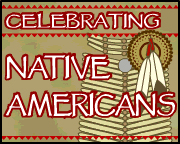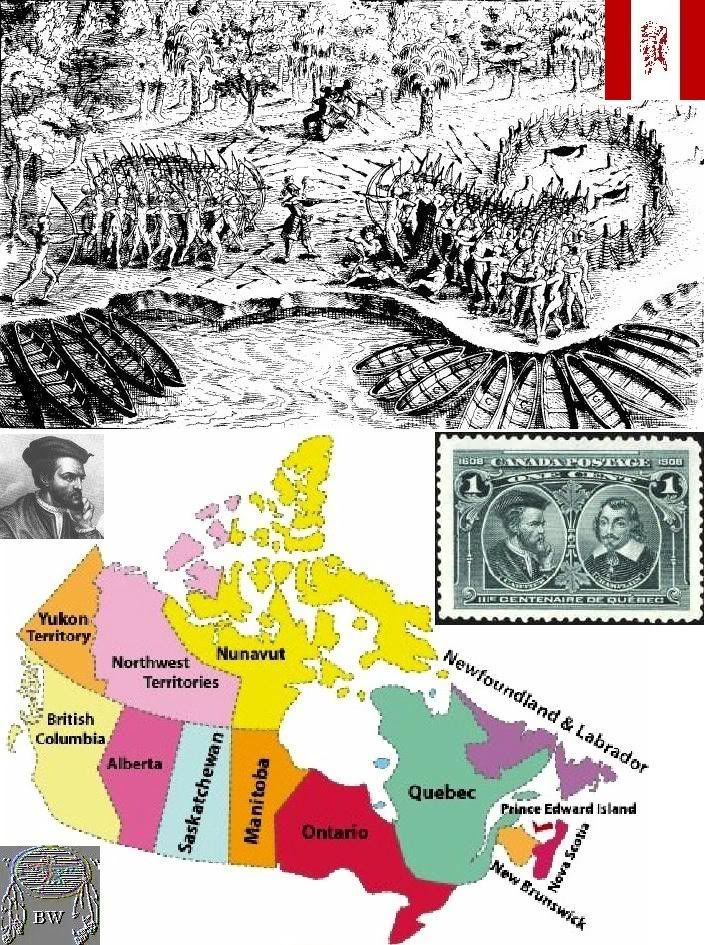|
BRAVEHORSE WARRIOR Kakcenthiony
Onondaga Warrior

 Chief Kakcenthiony
Warrior Citation
KAK¢ENTHIONY (Cachointioni, Caghswoughtiooni, Casswettune, Kaghswoughtioony, Kaghswughtioni, Red Head), an important member
of the Onondaga council, and official speaker of the Onondagas; d. c. June 1756 at the Onondaga castle (near Syracuse, N.Y.).
His son Ononwarogo was usually called the young Red Head by the British and gradually became known as Red Head after the death
of Kak¢enthiony. Kak¢enthiony first appears in historical records in 1748, when he spoke at a conference of Iroquois with
Governor La Galissonière [Barrin] in Montreal. On behalf of the Confederacy he denied British claims that the Six Nations
were vassals of the British crown. The Iroquois “had not ceded to any one their lands, which they hold only of heaven,”
he was reported to have said. In July 1751 Kak¢enthiony and numerous other Onondaga chiefs attended a conference with Governor
La Jonquière [Taffanel]. Claiming to represent the Six Nations Council, they apparently intended to sell the portage at Oneida
Lake (N.Y.) to the French. Some Oneidas, however, rejected the delegation’s claim to speak for the Six Nations. The
sale would have been a blow to the British, since the land was on the route from Albany to Oswego, the only British post on
the Great Lakes. After considerable dissension within the Confederacy, the land was instead deeded to William Johnson.
Chief Kakcenthiony
Warrior Citation
KAK¢ENTHIONY (Cachointioni, Caghswoughtiooni, Casswettune, Kaghswoughtioony, Kaghswughtioni, Red Head), an important member
of the Onondaga council, and official speaker of the Onondagas; d. c. June 1756 at the Onondaga castle (near Syracuse, N.Y.).
His son Ononwarogo was usually called the young Red Head by the British and gradually became known as Red Head after the death
of Kak¢enthiony. Kak¢enthiony first appears in historical records in 1748, when he spoke at a conference of Iroquois with
Governor La Galissonière [Barrin] in Montreal. On behalf of the Confederacy he denied British claims that the Six Nations
were vassals of the British crown. The Iroquois “had not ceded to any one their lands, which they hold only of heaven,”
he was reported to have said. In July 1751 Kak¢enthiony and numerous other Onondaga chiefs attended a conference with Governor
La Jonquière [Taffanel]. Claiming to represent the Six Nations Council, they apparently intended to sell the portage at Oneida
Lake (N.Y.) to the French. Some Oneidas, however, rejected the delegation’s claim to speak for the Six Nations. The
sale would have been a blow to the British, since the land was on the route from Albany to Oswego, the only British post on
the Great Lakes. After considerable dissension within the Confederacy, the land was instead deeded to William Johnson.
 Since 1701, when Teganissorens and other Iroquois leaders had concluded a treaty with New France, the official policy
of the Confederacy had been neutrality in the struggle between the French and British. In the early 1750s Kak¢enthiony was
apparently still attempting to maintain this stand, but efforts to keep on good terms with both sides failed to prevent the
Iroquois from being increasingly weakened by the expansion of the European powers. He lamented to Johnson in 1753 that “we
dont know what you Christians French, and English together intend we are so hemm’d in by both, that we have hardly a
Hunting place left, in a little while, if we find a Bear in a Tree, there will immediately Appear an Owner for the Land to
Challenge the Property, and hinder us from killing it which is our livelyhood, we are so Perplexed, between both, that we
hardly know what to say or to think.” By the early stages of the Seven Years’ War in America, Kak¢enthiony appears
to have been won to a policy of cooperation with the British. On behalf of Johnson, who had been appointed superintendent
of northern Native Americans, he delivered a speech on 21 June 1755 to a thousand Indians assembled at Mount Johnson (near
Amsterdam, N.Y.). In February 1756 at another major conference Kak¢enthiony, as speaker, presented Johnson with an immense
belt of wampum “as a pledge of our inviolable attachment to you, and of our unshaken resolution, of joining you in all
your measures. . . .” Although this commitment did not mark the end of neutralist and pro-French sentiment among the
Six Nations, it foreshadowed their eventual decision to join the British side in the war. By June 1756 Kak¢enthiony was dead,
and Johnson along with the Six Nations chiefs mourned his passing in a condolence ceremony at the Oneida castle (near Oneida,
NY). From: historical accounts & records
Since 1701, when Teganissorens and other Iroquois leaders had concluded a treaty with New France, the official policy
of the Confederacy had been neutrality in the struggle between the French and British. In the early 1750s Kak¢enthiony was
apparently still attempting to maintain this stand, but efforts to keep on good terms with both sides failed to prevent the
Iroquois from being increasingly weakened by the expansion of the European powers. He lamented to Johnson in 1753 that “we
dont know what you Christians French, and English together intend we are so hemm’d in by both, that we have hardly a
Hunting place left, in a little while, if we find a Bear in a Tree, there will immediately Appear an Owner for the Land to
Challenge the Property, and hinder us from killing it which is our livelyhood, we are so Perplexed, between both, that we
hardly know what to say or to think.” By the early stages of the Seven Years’ War in America, Kak¢enthiony appears
to have been won to a policy of cooperation with the British. On behalf of Johnson, who had been appointed superintendent
of northern Native Americans, he delivered a speech on 21 June 1755 to a thousand Indians assembled at Mount Johnson (near
Amsterdam, N.Y.). In February 1756 at another major conference Kak¢enthiony, as speaker, presented Johnson with an immense
belt of wampum “as a pledge of our inviolable attachment to you, and of our unshaken resolution, of joining you in all
your measures. . . .” Although this commitment did not mark the end of neutralist and pro-French sentiment among the
Six Nations, it foreshadowed their eventual decision to join the British side in the war. By June 1756 Kak¢enthiony was dead,
and Johnson along with the Six Nations chiefs mourned his passing in a condolence ceremony at the Oneida castle (near Oneida,
NY). From: historical accounts & records
|

